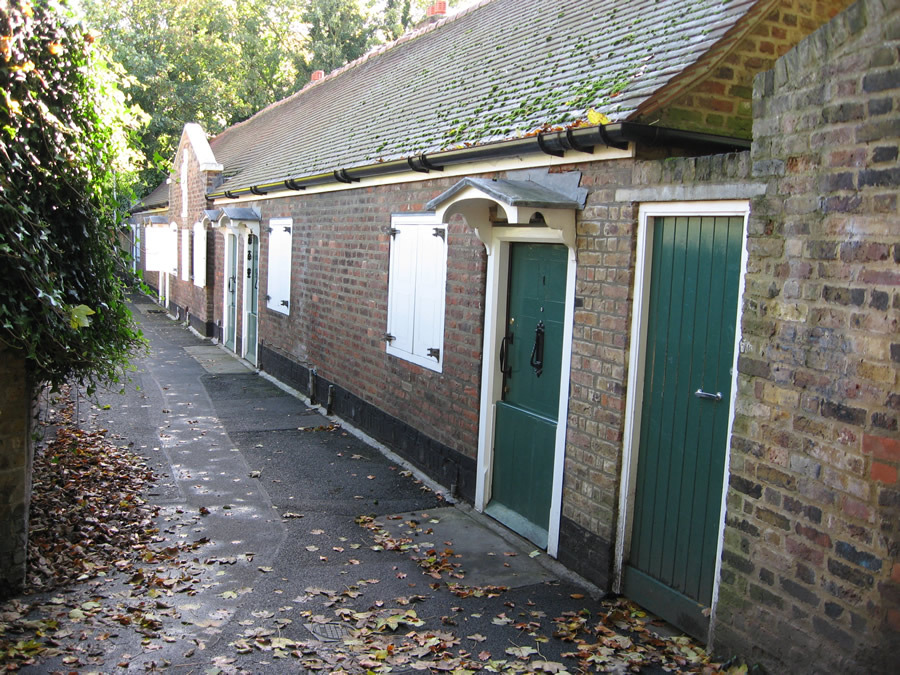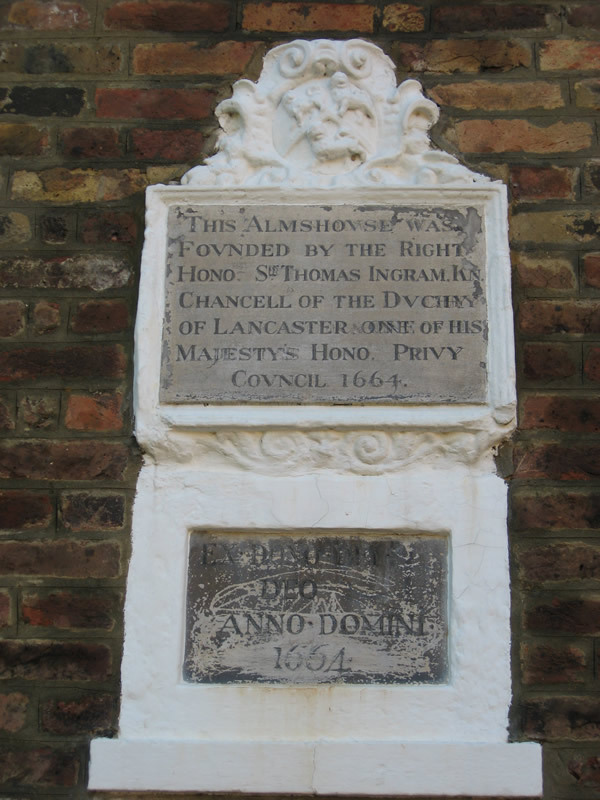Ingram’s Almshouses were founded and endowed in 1664 by Sir Thomas Ingram, Chancellor of the Duchy of Lancaster in the reign on Charles II, for six women.
A notice of the wall of one of the alms-houses reads ‘This almshouse was founded by the Right Hono. Sir Thomas Ingram KC, Chancell of the Duchy of Lancaster. One of His Majesty’s Hono. Privy Council 1664.’ Underneath is his family motto: ‘Ex dono dei deo. Anno Domini 1664.’ (From God’s gift to God.)
The endowment consisted of lands in Yorkshire given by the founder and let at £42 15s 10d pa; £9 pa interest of money given by Lady Kinsale in 1720; £6 pa interest of money given by John Derbyshire Birkhead in 1743; and rent charges on lands in Isleworth given by Cary Elwes in 1768 making a total of £78 15s. 10d. pa. In July 1809 a sum of £250 South Sea stock was bought with the legacy of a Thomas Murthwaite. In May 1825 John Allen left £900, 3% to this charity and £4 p.a to each inmate.

Some of the first residents may have been victims of the Great Plague of 1665 when it reached Isleworth. In that year 195 villagers were buried in Isleworth, of whom 148 died from the plague.
Mill Plat is a mere passage by today’s standards but in 1664 roads were narrow. The name could be derived from the word ‘plat’ having the same meaning as ‘plot’ and this may mean a flat piece of ground near the mill. It could also mean the mill landing place because ‘plat’ also means a large flat stone used as the landing place for a stair and certainly Mill Plat leads to the mill basin into which the barges were manoeuvred to be loaded with the flour from Kidd’s Mill, which at one time was believed to be the largest corn mill in England.

